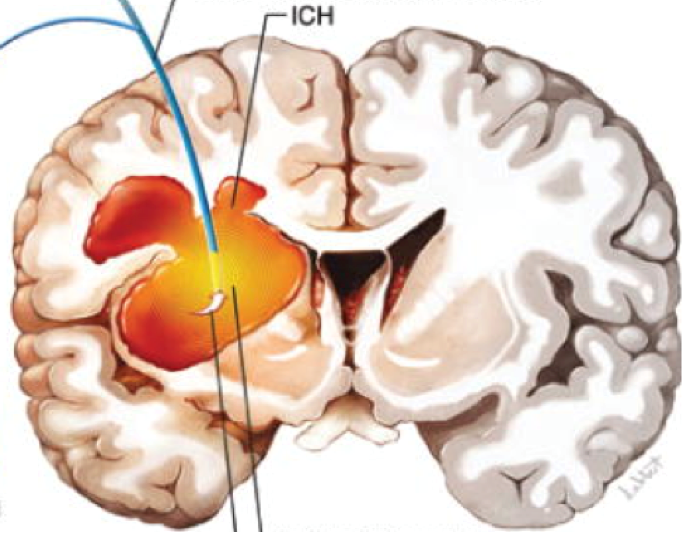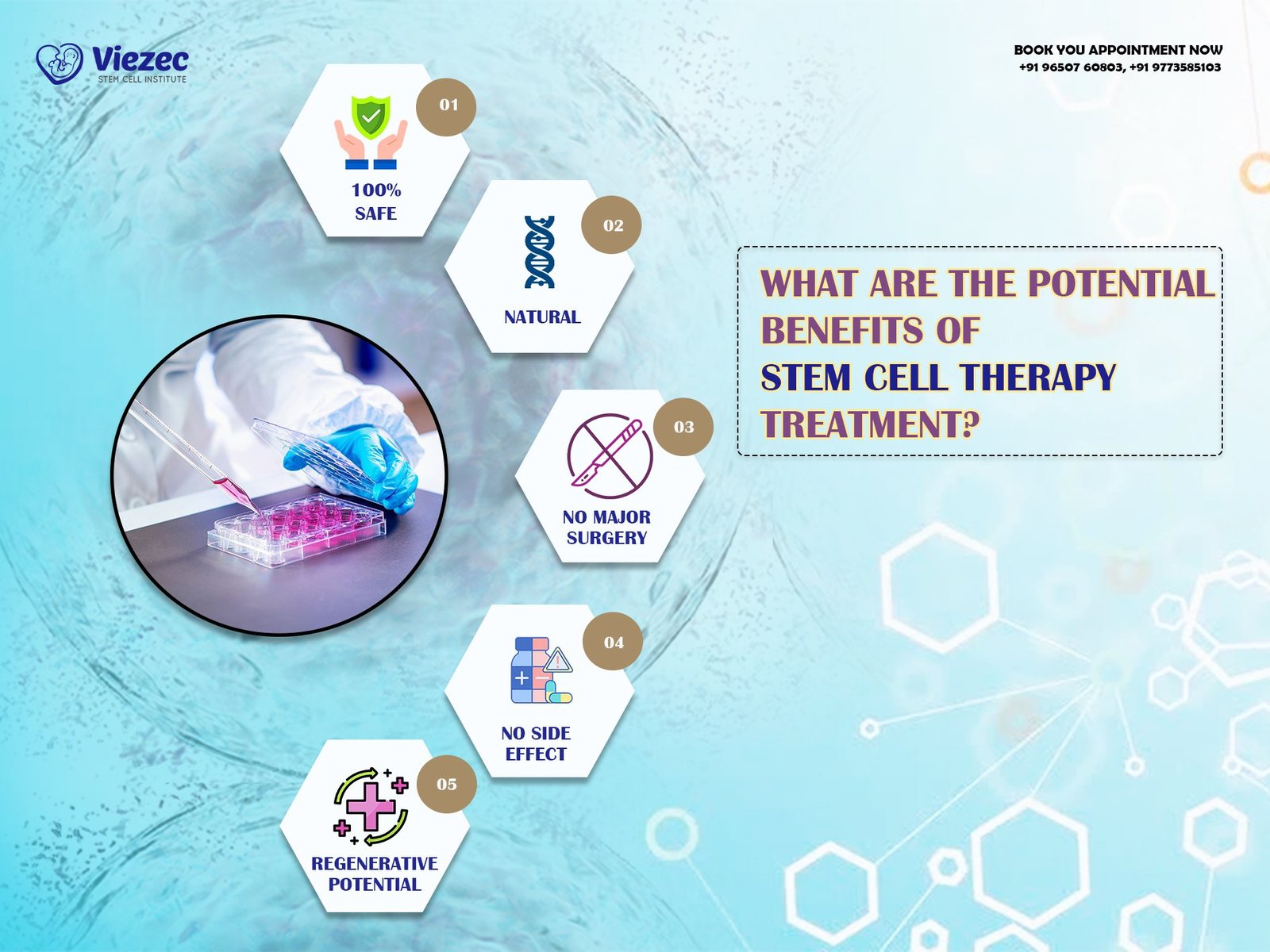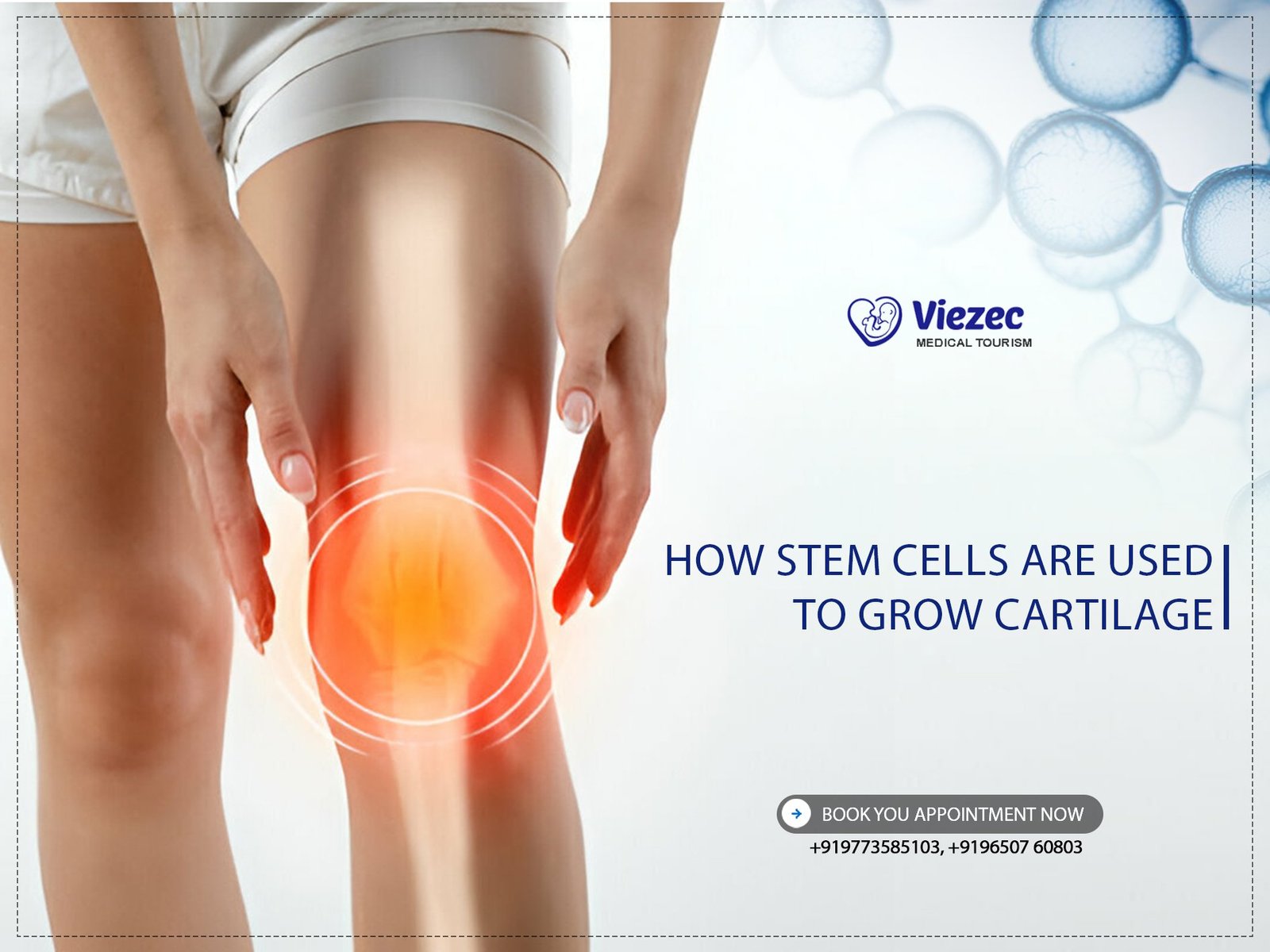Intracerebral Hemorrhage (ICH) is one of the most severe and life-threatening forms of stroke, often resulting in long-term disabilities or even death. Traditional treatments—while critical for immediate stabilization—offer limited success in reversing neurological damage. In this context, stem cell therapy is emerging as a powerful regenerative approach, aiming not just to manage symptoms but to repair the brain itself.
This article explores the causes and impact of ICH, current limitations in conventional care, and the transformative potential of stem cell treatment. It covers how different types of stem cells—such as MSCs and NSCs—work to regenerate neural tissue, reduce inflammation, and improve blood flow in the brain. Supported by promising clinical evidence and ongoing innovation, stem cell therapy is offering ICH patients new hope for functional recovery and improved quality of life.
For those seeking advanced, ethical, and patient-centered care, Viezec, in India stands out as a trusted provider delivering customized treatment plans for neurological conditions.
Understanding Intracerebral Hemorrhage (ICH)
What Is Intracerebral Hemorrhage?
Intracerebral Hemorrhage (ICH) is a severe form of stroke that occurs when a blood vessel bursts and leaks blood directly into the brain tissue. This sudden bleeding increases pressure in the brain, causing inflammation, cell damage, and potentially life-threatening neurological impairment. Unlike other types of stroke caused by blocked arteries, ICH is a hemorrhagic stroke, meaning it stems from bleeding rather than a clot. Immediate medical attention is crucial to prevent further brain injury and save the patient’s life.
Common Causes and Risk Factors
ICH can result from various conditions that weaken blood vessels or increase pressure inside the brain. The most common triggers include:
-
Chronic hypertension (high blood pressure): This is the leading cause, accounting for nearly 70% of spontaneous ICH cases.
-
Head trauma: Often seen in falls or accidents, especially among older adults.
-
Aneurysms and arteriovenous malformations (AVMs): Congenital defects in blood vessels can rupture unexpectedly.
-
Use of blood thinners (anticoagulants): Medications like warfarin or aspirin can increase the risk of bleeding.
-
Substance use: Long-term alcohol abuse or drug use (e.g., cocaine) can weaken vessels or spike blood pressure.
-
Advanced age and smoking: These factors further compromise vascular health and increase stroke risk.
Signs and Symptoms You Shouldn’t Ignore
Early recognition of ICH symptoms can be life-saving. If you or someone near you experiences the following warning signs, seek emergency care immediately:
-
A sudden, intense headache often described as the worst ever experienced
-
Nausea and vomiting, which may occur due to increased intracranial pressure
-
Weakness or numbness, especially on one side of the body
-
Difficulty with speaking, understanding speech, or forming words
-
Loss of balance or coordination
-
Seizures or loss of consciousness
Traditional Management of ICH
Medical and Surgical Interventions
Treating Intracerebral Hemorrhage is a race against time. Once bleeding occurs in the brain, the primary goal of conventional treatment is to stabilize the patient, control the bleeding, and minimize further damage.
Medical management typically involves:
-
Lowering blood pressure to reduce continued bleeding
-
Administering medications to control brain swelling (e.g., mannitol or corticosteroids)
-
Reversing the effects of blood thinners if the patient is on anticoagulants
-
Monitoring intracranial pressure in intensive care settings
In more severe cases, surgical intervention becomes necessary. Surgeons may perform procedures to:
-
Remove the accumulated blood (hematoma evacuation)
-
Relieve pressure in the skull (decompressive craniectomy)
-
Repair damaged blood vessels or remove malformations like AVMs
These procedures can be life-saving, especially when performed early.
Limitations in Current Therapies
While current treatments can stabilize patients and prevent further damage, they have clear limitations—especially when it comes to long-term neurological recovery.
Some key challenges include:
-
Inability to reverse existing brain damage: Once neurons are destroyed by bleeding, they do not naturally regenerate.
-
Limited improvement in functional outcomes: Many survivors are left with chronic physical or cognitive impairments.
-
High recurrence and mortality rates: Even after successful surgery, there’s a risk of complications, infections, or re-bleeding.
Despite the advances in emergency stroke care, there remains a critical need for therapies that go beyond survival—treatments that help the brain heal and regenerate. That’s where regenerative medicine, particularly stem cell therapy, offers new hope.
Take Control of Your Health Today
Explore how stem cell therapy can help treat Intracerebral Hemorrhage and improve your quality of life. Start your journey with us now.
Stem Cell Therapy: A Regenerative Approach
What Are Stem Cells?
Stem cells are the body’s master repair system—unique, unspecialized cells capable of becoming a variety of cell types, such as nerve, muscle, or blood cells. What makes them particularly powerful in medical science is their ability to self-renew and differentiate into specialized tissues. In the context of brain injuries like Intracerebral Hemorrhage (ICH), this means stem cells have the potential to replace damaged neurons, restore lost function, and stimulate healing in areas once thought irreparable.
Types of Stem Cells Used in Neurological Recovery
Mesenchymal Stem Cells (MSCs)
These adult stem cells are commonly harvested from bone marrow, fat tissue, or umbilical cord tissue. MSCs are highly favored for neurological use because they are:
-
Anti-inflammatory
-
Immunomodulatory
-
Easy to isolate and expand in labs
They can help calm the immune system and foster a more healing-friendly environment in the brain.
Neural Stem Cells (NSCs)
NSCs are naturally found in the brain and spinal cord. They are capable of differentiating into neurons and glial cells—the very building blocks of the central nervous system. Their use in clinical settings is growing, especially in research trials for stroke, traumatic brain injury, and ICH.
Induced Pluripotent Stem Cells (iPSCs)
These are adult cells genetically reprogrammed to behave like embryonic stem cells. iPSCs can become any type of cell, including neurons, offering vast potential for personalized regenerative therapies. However, because they are still in early-stage research, iPSC-based therapies are not yet widely available clinically.
Mechanism of Action in Brain Healing
Stem cells assist in brain recovery through a multi-faceted approach:
-
Neuron Replacement: They can transform into functional brain cells to replace those lost to hemorrhage.
-
Anti-inflammatory Action: By reducing inflammatory cytokines, they create a more favorable environment for healing.
-
Angiogenesis: Stem cells promote the formation of new blood vessels, enhancing oxygen and nutrient supply to damaged areas.
-
Neuroplasticity Enhancement: They stimulate neural networks to reorganize and adapt, improving recovery of lost functions like movement and speech.
In essence, stem cell therapy doesn’t just treat the symptoms of ICH—it targets the underlying damage, offering hope for real, lasting neurological repair.
How Stem Cells Help ICH Patients Recover
Neuroregeneration and Brain Cell Repair
One of the most transformative aspects of stem cell therapy is its ability to regenerate neural tissue. After an intracerebral hemorrhage, many brain cells (neurons and glial cells) are irreparably damaged or destroyed. Unlike other cells in the body, neurons don’t easily regenerate on their own.
Stem cells, however, offer a revolutionary path forward. Once introduced into the body, they can migrate to injured brain areas and differentiate into new neurons, replacing lost cells. They also help support existing but stressed neurons, improving the brain’s natural repair process. Over time, this regeneration may restore motor skills, speech, memory, and other critical functions.
Anti-Inflammatory and Immune Modulation Effects
After a brain hemorrhage, inflammation can linger and cause secondary injury—sometimes more harmful than the initial bleed. Stem cells help mitigate this by:
-
Releasing anti-inflammatory cytokines
-
Reducing microglial overactivation (the brain’s immune cells)
-
Modulating the body’s immune response to prevent further neuronal damage
This creates a more stable environment for healing, reducing the likelihood of complications and accelerating recovery.
Enhancing Blood Supply and Reducing Brain Swelling
A lesser-known yet crucial benefit of stem cells is their role in angiogenesis—the formation of new blood vessels. This process improves circulation in and around damaged tissue, delivering oxygen and nutrients more efficiently.
Additionally, stem cells help control cerebral edema (brain swelling), which is a dangerous outcome of ICH. By regulating inflammation and cellular signaling, they reduce fluid accumulation, decreasing pressure on the brain and improving overall recovery conditions.
Research and Clinical Evidence
Key Studies on Stem Cells for ICH
Over the past decade, a growing body of research has explored the potential of stem cell therapy for patients suffering from intracerebral hemorrhage. While still emerging, the findings are promising and point toward a future where regenerative medicine could be integrated into standard stroke care.
In preclinical animal models, stem cell injections have demonstrated measurable improvements in motor coordination, reduced lesion sizes, and increased survival rates. These outcomes have paved the way for human clinical trials.
One notable study published in The Lancet Neurology (2016) investigated the use of bone marrow-derived stem cells in chronic stroke patients, including those with hemorrhagic origins. The study showed improvements in upper-limb function and overall disability scores, suggesting the regenerative effects are not only real but also clinically significant.
Clinical Trial Success Rates
While still considered experimental in many countries, early-phase clinical trials have reported:
-
Improved neurological function in up to 60–70% of patients receiving mesenchymal stem cells (MSCs)
-
Minimal serious adverse effects, particularly when cells were derived from the patient’s own body (autologous)
-
Greater improvements in patients treated within 6 months of the hemorrhagic event, compared to those treated later
However, these studies are often small in scale, and larger randomized controlled trials are ongoing to confirm these findings.
Improvements in Mobility and Cognition
Patients receiving stem cell therapy after ICH have shown tangible gains in:
-
Mobility: Increased limb control, gait balance, and coordination
-
Speech and Language: Improved ability to articulate and comprehend
-
Cognitive Function: Better memory retention and problem-solving skills
-
Daily Activities: Enhanced independence in personal care and movement
Though outcomes vary by individual and treatment timing, these results hint at a paradigm shift in how brain injuries might be treated moving forward—not just managed, but repaired.
We’re Here to Help
If you have questions or need more information, our team is ready to assist you. Get in touch with us today.
Procedure Overview
How Stem Cells Are Delivered
Administering stem cells for intracerebral hemorrhage is a carefully managed medical process that varies depending on the severity of the condition, the type of stem cells used, and the treatment goals. The two most common delivery methods are:
Intravenous Administration
This is the least invasive and most commonly used method. Stem cells are infused into a vein, typically in the arm. From there, the cells travel through the bloodstream and naturally migrate to damaged areas in the brain, guided by chemical signals from the injury site.
Advantages:
-
Simple and safe
-
Well-tolerated in most patients
-
Suitable for early-stage intervention and systemic repair
Intrathecal (Spinal) Injection
In this method, stem cells are injected directly into the cerebrospinal fluid via the spinal canal. This allows the cells to bypass the blood-brain barrier more effectively and reach the central nervous system more directly.
Advantages:
-
Higher concentration of stem cells reaches the brain
-
Often used in more severe or localized neurological damage
-
Faster clinical response observed in some cases
Safety Protocols and Post-Treatment Monitoring
Stem cell procedures are performed under strict clinical protocols to ensure patient safety. Here’s what patients can expect:
-
Pre-screening tests: To check overall health, immune compatibility, and eligibility
-
Sterile environment: Procedures are done in clean surgical or clinical settings
-
Monitoring period: After infusion, patients are observed for immediate reactions, such as fever, inflammation, or infection
-
Follow-up care: Includes neurological assessments, brain imaging (MRI or CT), and rehabilitation as needed
So far, most clinical applications have shown a favorable safety profile, especially when autologous (self-derived) stem cells are used.
Potential Benefits of Stem Cell Therapy
Stem cell therapy offers more than just a new treatment—it offers hope to patients who were once left with limited recovery options after an intracerebral hemorrhage. While individual outcomes may vary, many patients experience meaningful improvements that positively impact their daily lives.
Faster Recovery and Neuroplasticity
One of the most compelling benefits of stem cell therapy is the potential to accelerate recovery. Stem cells stimulate neuroplasticity—the brain’s remarkable ability to rewire and reorganize itself after injury. This means:
-
Faster return of motor function
-
Quicker regaining of speech and comprehension
-
More rapid adaptation of healthy brain regions to take over lost functions
When paired with physical or cognitive rehabilitation, stem cell therapy can enhance the effectiveness of traditional recovery efforts.
Lowered Risk of Long-Term Disability
By reducing inflammation, repairing damaged tissue, and supporting neural networks, stem cells help mitigate the risk of permanent disabilities such as:
-
Paralysis or weakness on one side of the body (hemiparesis)
-
Speech and language difficulties (aphasia)
-
Memory loss and confusion
For many patients, this means greater independence and less reliance on caregivers over time.
Enhanced Quality of Life for Patients
Beyond the physical recovery, patients often report:
-
Improved emotional well-being
-
Reduced anxiety and depression tied to their condition
-
Better social interaction and participation in daily life
Families also benefit, as the caregiving burden lightens and loved ones regain aspects of their previous lifestyle. In short, stem cell therapy is about more than survival—it’s about restoring dignity, capability, and hope.
Risks and Considerations
While stem cell therapy offers promising results, it’s essential to approach it with realistic expectations and an understanding of the potential risks. As with any medical procedure—especially those involving emerging technologies—due diligence is critical for both patients and providers.
Possible Side Effects
Most stem cell treatments, particularly those using autologous stem cells (from the patient’s own body), are well-tolerated. However, some risks include:
-
Infection: Although rare, introducing cells via injection or infusion always carries a minor risk of infection if not handled in sterile conditions.
-
Immune reaction: Allogeneic (donor-derived) cells may trigger immune responses, especially if not properly matched.
-
Pain or inflammation at the injection site
-
Blood clots or vascular complications, though infrequent, can occur if delivery is not carefully monitored
It’s important to note that most adverse effects reported so far are mild and temporary, especially in reputable clinical settings.
Ethical and Regulatory Oversight
Stem cell therapies must adhere to strict ethical guidelines and regulatory standards to ensure safety, efficacy, and transparency.
Approved vs. Experimental Treatments
-
Approved treatments: These have been evaluated through rigorous clinical trials and authorized by national health authorities (e.g., FDA in the U.S.).
-
Experimental or investigational therapies: Often offered under clinical trial frameworks, these are still being studied for safety and long-term outcomes.
Unfortunately, unregulated clinics in some countries may advertise unproven treatments without proper oversight, potentially putting patients at risk. Always seek care from centers that follow international protocols and publish peer-reviewed results.
Being informed and asking the right questions can make all the difference in choosing a safe and effective stem cell intervention.
Candidate Evaluation
Not every patient is an ideal candidate for stem cell therapy, especially in the context of a complex neurological condition like intracerebral hemorrhage. A thorough medical evaluation ensures that the therapy is not only safe but also likely to be effective.
Who Qualifies for Stem Cell Therapy?
While criteria may vary slightly by provider or clinical trial, most centers consider the following factors when determining eligibility:
-
Stable medical condition: The patient should be out of the acute phase of ICH and clinically stable.
-
No active infections or immune disorders: Conditions that could interfere with the therapy’s effectiveness or safety may disqualify a patient.
-
No history of cancer: Especially if the stem cells are derived from the patient’s body, a cancer-free history is important to reduce risks of abnormal cell growth.
-
Age and general health: Though there’s no strict age limit, younger and healthier patients may see better results due to stronger regenerative capacity.
-
Rehabilitation potential: Patients who are physically and mentally capable of participating in rehabilitation programs often respond better to stem cell therapy.
Pre-Treatment Diagnostics and Assessments
Before undergoing treatment, a comprehensive diagnostic process is conducted, including:
-
Brain imaging: MRI or CT scans to assess the extent and location of the damage
-
Neurological exams: To evaluate motor skills, cognition, language, and sensory function
-
Blood work and lab tests: To check for infections, inflammation markers, immune status, and suitability for the procedure
-
Consultation with a multidisciplinary team: Including neurologists, stem cell specialists, and rehabilitation experts to design a personalized care plan
These assessments help establish a clear baseline, ensuring that improvements post-treatment can be accurately measured and that risks are minimized.
Transform Your Life with Stem Cell Therapy
Are you ready to take the next step towards healing? Secure your appointment today to learn more about our effective treatments for Intracerebral Hemorrhage.
Choosing a Treatment Center
Selecting the right clinic for stem cell therapy is crucial to ensure safety, efficacy, and a supportive healing environment. In India, Viezec stands out as a reputable provider offering comprehensive stem cell treatments.
What to Look for in a Reputable Clinic
When evaluating potential treatment centers, consider the following factors:
-
Qualified Medical Team: Ensure the clinic has experienced and certified stem cell specialists.
-
Transparent Clinical Practices: Look for centers that openly share treatment protocols and outcomes.
-
Regulatory Compliance: The clinic should adhere to national and international medical standards.
-
Comprehensive Patient Support: From initial consultation to post-treatment care, a good clinic offers continuous support.
Viezec: A Trusted Choice
Based in New Delhi, Viezec is recognized for its commitment to patient-centric care and advanced stem cell therapies. Their team comprises experienced stem cell biologists and doctors who provide personalized treatment plans. Viezec offers a range of therapies targeting various conditions, including neurological disorders like intracerebral hemorrhage. They also provide supportive services such as transportation and accommodation assistance for international patients.
Questions to Ask Before Starting Treatment
Before committing to a treatment plan, consider asking:
-
Is the treatment FDA-approved or part of a clinical trial?
-
What is the expected success rate for my specific condition?
-
What post-treatment support and rehabilitation services are available?
Engaging in open dialogue with your chosen clinic ensures clarity and sets realistic expectations for your treatment journey.
The Future of Stem Cell Therapy in Stroke and ICH Care
As the field of regenerative medicine continues to evolve, the role of stem cell therapy in treating stroke-related conditions—like intracerebral hemorrhage—is moving from experimental to promisingly practical. What once seemed like science fiction is now at the edge of becoming standard care.
Innovative Research and Development
Researchers across the globe are developing advanced techniques to enhance the efficacy and safety of stem cell treatments. Key innovations include:
- Exosome therapy: Derived from stem cells, exosomes are nano-sized vesicles that may offer regenerative benefits without needing whole-cell transplants.
These breakthroughs are expanding the possibilities of how—and how effectively—brain damage from hemorrhagic stroke can be repaired.
The Promise of Personalized Regenerative Medicine
The future of stem cell therapy lies in its ability to be highly personalized. Rather than a one-size-fits-all approach, scientists are moving toward tailoring treatments based on:
-
Genetic profile
-
Severity and location of brain injury
-
Patient’s age, health status, and response to therapy
Institutions like Viezec is already taking steps in this direction, combining cutting-edge science with compassionate, individualized care. Viezec’s commitment to research-based, patient-focused treatments positions it as a key player in the future of neurological regenerative therapy.
As clinical trials grow in number and scope, stem cell therapy for ICH is no longer just a hopeful idea—it’s becoming a transformative reality for patients seeking not just survival, but a return to meaningful life.
Frequently Asked Questions
1. What is intracerebral hemorrhage and how serious is it?
Intracerebral hemorrhage (ICH) is a life-threatening type of stroke caused by bleeding directly into the brain tissue. It leads to increased pressure in the brain, tissue damage, and often long-term neurological deficits. Immediate medical attention is critical for survival and recovery.
2. Can stem cell therapy cure brain damage caused by ICH?
Stem cell therapy cannot “cure” brain damage, but it can significantly aid in recovery. It works by promoting neuroregeneration, reducing inflammation, and enhancing the brain’s ability to heal. Many patients see improvements in mobility, cognition, and quality of life after treatment.
3. Is stem cell therapy for ICH FDA-approved?
As of now, stem cell therapy for ICH is still considered investigational in many countries, including the U.S. However, it is available in research-driven clinics and approved centers like Viezec in India, which follow ethical and regulated treatment protocols.
4. Who is a good candidate for stem cell therapy after a brain hemorrhage?
Ideal candidates are patients who are medically stable, not in the acute bleeding phase, and have no active infections, immune disorders, or cancer. A thorough diagnostic evaluation is essential before treatment.
5. What types of stem cells are used in treating ICH?
The most commonly used are mesenchymal stem cells (MSCs), derived from bone marrow, fat, or umbilical cord tissue. In some advanced cases, neural stem cells (NSCs) or induced pluripotent stem cells (iPSCs) may also be used, typically in a clinical trial setting.
6. How long does it take to see results from stem cell therapy?
Many patients begin to notice improvements in motor skills, speech, and cognition within a few weeks to months after treatment. Full benefits often require time and are enhanced with rehabilitation.
7. Why choose Viezec for stem cell therapy in India?
Viezec is known for its ethical practices, experienced medical team, and patient-centered approach. It offers personalized treatment plans, international patient support, and transparent outcomes—making it a trusted destination for advanced regenerative care.












